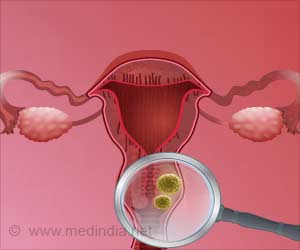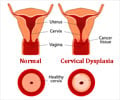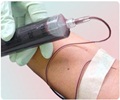- January is Cervical Cancer Awareness Month
- It aims to raise awareness about the dangers of cervical cancer among women
- It encourages teenagers to get vaccinated and women to get screened regularly
Read More..
Human Papillomavirus (HPV): The Causative Agent of Cervical Cancer
Human papillomavirus (HPV) infections are very common and most sexually active women become infected sometime in their lifetimes. Most HPV infections, such as those that cause genital warts, are harmless and are cleared naturally by the body. However, some types of HPV can cause changes in the cells and tissues lining the cervix. If these changes are not detected early, it can lead to cervical cancer. Besides cervical cancer, HPV can also cause cancers of the anus, penis, vagina, vulva, and oral cavity.There are over 100 types of HPV, of which around 30 cause cancer. Of these, HPV 16 and 18 pose the highest risk and are responsible for over 70 percent of cervical cancer cases. Other high-risk types include 31, 33, 45, 52, and 58. On the other hand, HPV 6 and 11 rarely cause cancer, but are responsible for over 90 percent of cases of genital warts.
HPV & Cervical Cancer: Facts & Figures
- HPV infections occur in 45 percent of men between 18-59 years of age
- HPV infections occur in 40 percent of women between 18-59 years of age
- 570,000 new cervical cancer cases occur annually worldwide
- 311,000 deaths from cervical cancer occur annually worldwide
- 80 percent of cervical cancer cases occur in low-income countries
- 90 percent of cervical cancer deaths occur in low-income countries
- In India, cervical cancer is responsible for 6-29 percent of all cancers in women
- In India, the incidence of cervical cancer is 5-23 per 100,000 women
- 90
percent of HPV cancers can be prevented by vaccination
Strategies for Prevention of Cervical Cancer
Cervical cancer can be prevented by vaccination and early detection by screening for HPV infections.Vaccination: HPV vaccines protect against cervical cancer and genital warts, as well as other types of genital cancers. These vaccines are highlighted below:
- Types of HPV Vaccines: There are two HPV vaccines that are currently available. One is Gardasil®, which is a 9-valent vaccine, manufactured by Merck. The other is Cervarix®, which is a bivalent vaccine, manufactured by GlaxoSmithKline (GSK). Both these vaccines are produced by recombinant DNA technology, popularly known as genetic engineering
- Dosage of Vaccine: Both vaccines require 3 doses to generate a robust immune response that confers full protection against HPV
- Age of Vaccination: It is recommended that both boys and girls between the ages of 11 and 14 years should be vaccinated, while adult women can be vaccinated till the age of 45 years
- Protective Efficacy: Gardasil® protects against 9 types of high-risk HPV, namely, 6, 11, 16, 18, 31, 33, 45, 52, and 58, while Cervarix® protects against 2 HPV types, namely, 16, and 18. All these HPV types pose the highest risk of developing cervical cancer. Both vaccines are highly effective and confer almost 100 percent protection against cervical cancer
- Pap Smear Test: This test is named after Dr. Georgios Papanikolaou, MD, the famous Greek physician-scientist who was a pioneering cytopathologist specializing in early cancer detection and the inventor of the Pap smear test. This technique uses cells obtained from the inner lining of the cervix and observed under the microscope to detect any pathological changes
- HPV Test: This test directly detects the virus instead of looking for abnormal cellular changes, as is done in the Pap smear test. This test accurately pin-points the HPV types present in infected cervical cell samples
Ways to Observe Cervical Cancer Awareness Month
Cervical Cancer Awareness Month can be observed in various ways, some of which are highlighted below:- Popular Talks: Renowned gynecologic oncologists could give popular lectures to enlighten women about the dangers of cervical cancer and how it can be prevented
- Print & Electronic Media: Both these media should highlight the importance of vaccination and regular screening for preventing cervical cancer to generate awareness among the general public
- Social Media: Social media platforms such as Facebook, Twitter and Instagram can be used to post news items, patient’s stories, infographics and other material to spread the message about cervical health
- Community Events: Community events can be organized to raise awareness about cervical health among women by distributing pamphlets and leaflets containing useful information on cervical cancer
- Fundraising Events: Fundraisers, including sponsored walkathons, marathons, cycling, and other sporting events could be organized to raise money for the care of cervical cancer patients
- Screening Camps: Hospitals and clinics could provide free cervical cancer screening to women at high risk of developing cervical cancer. This will educate them and encourage them to get tested regularly
- Wearing Teal & White: The teal and white ribbon designates cervical cancer awareness. So, by wearing this ribbon or other items made of teal and white, such as caps, bracelets, lapel pins, and other trinkets will show support for women suffering from cervical cancer
Health Tips for Preventing HPV Transmission
The following tips will help to stop HPV transmission and thereby prevent cervical cancer:- Undergoing Pap smear and HPV tests regularly to screen for HPV infections
- Vaccinating teenagers and adult women up to 45 years with the HPV vaccines
- Avoiding multiple sexual partners
- Using barrier methods such as condoms and microbicidal gels during sexual intercourse
- Quitting smoking
- Creating awareness about HPV vaccines among parents of school-goers
- Encouraging doctors to provide Pap smear testing at a reduced cost
- January is Cervical Health Awareness Month - (https://www.foundationforwomenscancer.org/january-15-2019/)
- Cancer Prevention in Practice - (https://www.nfid.org/2019/01/17/cancer-prevention-in-practice/)
- January 2020: Cervical Health Awareness Month - (https://www.immunizepa.org/january-2020-cervical-health-awareness-month/)
- January is Cervical Health Awareness Month - (https://www.cinj.org/sites/cinj/files/documents/January%20Cervical%20Health%20Awareness%20Month%202019.pdf)
Source-Medindia















